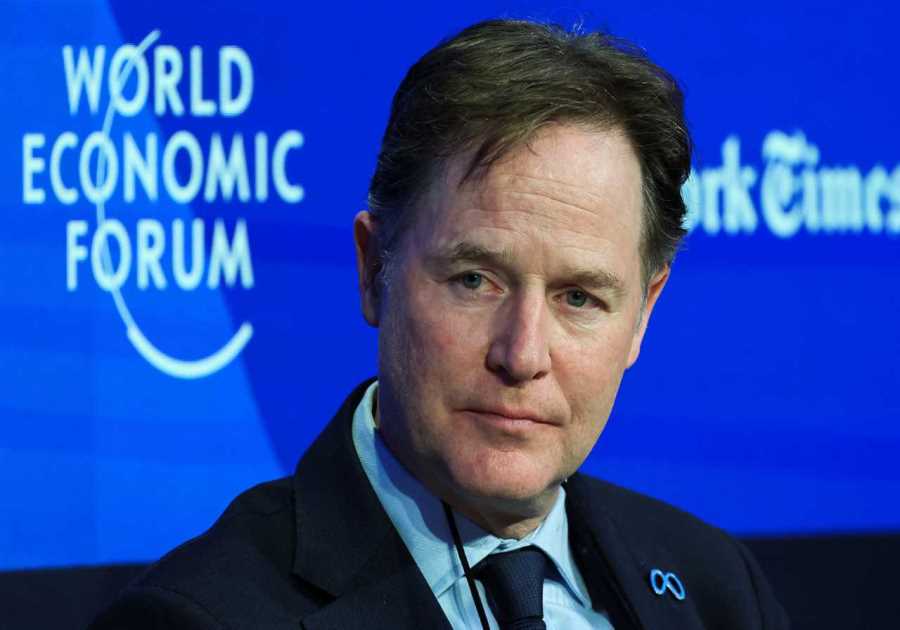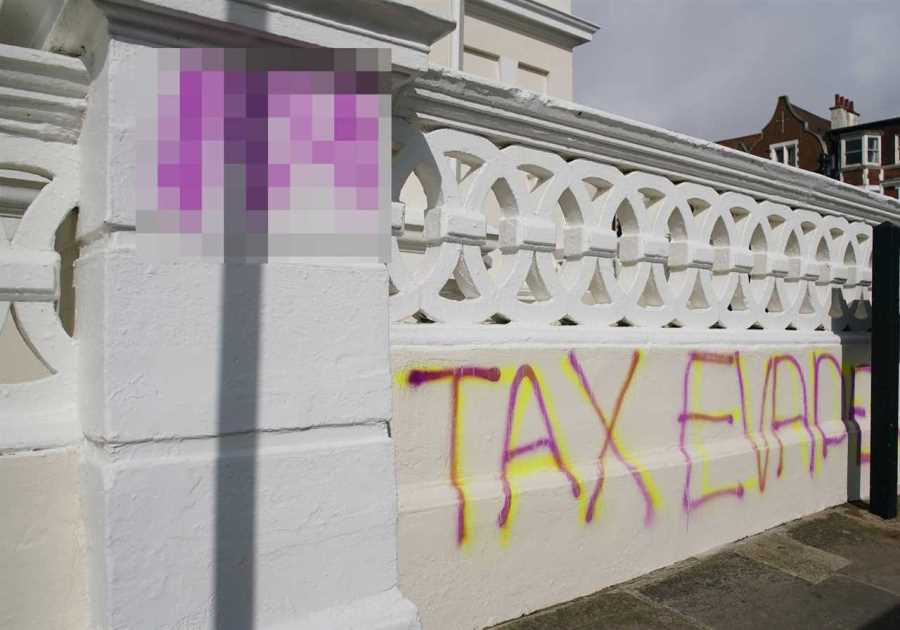
On Tuesday evening, former President Donald J. Trump, rattled by news that his longtime accountants had declared that years of his financial statements were not reliable, issued a statement of self-defense with new claims about his wealth.
These, too, did not add up.
In a rambling emailed message, Mr. Trump referred to a “June 30, 2014 Statement of Financial Condition” prepared by the accounting firm, Mazars USA, showing that the year before his first presidential run his net worth had been $5.8 billion. But that is not what he said back then.
When he declared his candidacy in 2015, he produced what he called his “Summary of Net Worth as of June 30, 2014” with a very different number: $8.7 billion. A month later, he upped the ante, releasing a statement pronouncing that his “net worth is in excess of TEN BILLION DOLLARS.”
The shape-shifting valuations, even in the face of mounting legal peril with Mazars’ decision to sever ties and disavow its past financial statements, get to the core of a problem for Mr. Trump. He has spent a lifetime bending reality to his will, often making it up as he went along, inventing facts and figures to support his needs in the moment. In fact, in his Tuesday email he suggested the intangible value of the “Trump brand” was actually worth an extra $3 billion in 2014.
“My net worth fluctuates, and it goes up and down with markets and with attitudes and with feelings, even my own feelings,” he testified in 2007 as part of his unsuccessful lawsuit over a book that suggested he was not really a billionaire.
Now, though, he faces multiple investigations that threaten to hold his questionable claims up to the light. In New York, two law enforcement inquiries are examining whether he fraudulently submitted overblown real estate valuations to secure loans. And in Georgia, a grand jury is looking into Mr. Trump’s attempts to pressure state officials to “find 11,780 votes” — his margin of defeat in 2020 in that battleground state — that he baselessly asserted had been stolen from him.
For Mr. Trump, such casual dalliances with inaccuracies and lies have long been central to his modus operandi, which he once famously described as “truthful hyperbole.” He has employed this “very effective form of promotion,” as he called it, to sell himself and build the brand that ultimately helped vault him to the White House.
Along the way, his puffery often came with unfortunate consequences for average people who could not distinguish truth from hyperbole. Yet for the most part, he avoided serious legal consequences, sometimes by paying to end lawsuits and, in at least one instance, stifle a criminal investigation.
After the success of the television show “The Apprentice” helped make Mr. Trump a household name in the early 2000s, he parlayed it into an ever-expanding assortment of branded products and services, from cologne and neckties to steaks and cellphone ringtones. There were promotional deals that generated millions of dollars for him, but also lawsuits that made what came to be a familiar argument: that Mr. Trump’s hyperbole misled clients into losing money in various ways.
He lent his name to the multilevel marketing of vitamins, pitching it as “an exciting plan to opt out of the recession,” and sold unaccredited real estate seminars through his for-profit Trump University. The company behind the vitamin scheme soon went bankrupt, and people who paid as much as $35,000 for the seminars sued, claiming they were worthless, eventually resulting in a $25 million settlement as Mr. Trump was about to enter the White House.
Buyers of condominium units in Trump-branded projects in Mexico and Florida alleged that they had been duped into thinking Mr. Trump had an active role in them, when in fact he had merely licensed his name. And in New York, people who bought units in the Trump SoHo development in Lower Manhattan claimed in court that Mr. Trump and his family had overstated the number of sales in the luxury building, damaging their investments.
Mr. Trump quietly settled that suit in 2011 — but on the condition that the plaintiffs notify criminal prosecutors looking into the exaggerated marketing of units that they no longer wished to cooperate. The criminal investigation, by the Manhattan district attorney’s office, was eventually dropped.
The current investigations in New York have proven a tougher challenge. The inquiry by the state attorney general, Letitia James, has obtained voluminous records covering years of financial transactions, documenting what appear to be misleading assertions by Mr. Trump or his representatives.
Among other things, according to court filings, Mr. Trump claimed his triplex penthouse apartment in Manhattan was 30,000 square feet, when in fact it was 11,000 square feet — inflating its supposed value by about $200 million. Similarly, the value of his estate in Westchester County was said to have been exaggerated by $61 million through the inclusion of seven nonexistent mansions.
Mr. Trump has railed against the investigations, calling them partisan “witch hunts” by Democrats, and has gone to court in bids to stop or slow them down. In his statement on Tuesday, he also suggested that they were racially motivated — Ms. James and the newly elected Manhattan district attorney, Alvin Bragg, are Black — and that his accountants had been browbeaten into quitting.
“Mazars’ decision to withdraw was clearly a result of the A.G.’s and D.A.’s vicious intimidation tactics used — also on other members of the Trump Organization,” Mr. Trump said in his statement. “Mazars, who were scared beyond belief, in conversations with us made it clear that they were willing to do or say anything to stop the constant threat which has gone against them for years.”
The Trump Investigations
Numerous inquiries. Since former President Donald Trump left office, there have been many investigations and inquiries into his businesses and personal affairs. Here’s a list of those ongoing:
He pointed out that, in its letter informing the Trump Organization that its financial statements from 2011 to 2020 “should no longer be relied upon,” Mazars also said it had not concluded that the statements, as a whole, contained “material discrepancies.” The firm did say, however, that the “totality of circumstances,” including its own investigation into the financial statements, had led it to conclude they were unreliable.
Mazars did not respond to a request for comment.
The somewhat muddled nature of the explanation by Mazars makes it hard to assess the motivation, and potential legal implications, behind its decision to part ways with Mr. Trump. Lynn Turner, the former chief accountant at the Securities and Exchange Commission, said the new information that Mazars learned of could require its previous financial statements to be revised. Although those original statements contained many disclaimers, coming into possession of significant new facts could leave the firm vulnerable to a lawsuit.
“They ain’t gonna issue that letter otherwise,” he said.
In addition to signing off on Mr. Trump’s statements of financial condition, which were used mostly when seeking bank loans or other credit, Mazars also prepared his tax returns, though the firm did not raise doubts about those in its letter.
Intentionally filing false tax returns with the government is a criminal offense, and there has been no indication that prosecutors are pursuing that avenue. As such, Mr. Trump’s tax filings have long been considered perhaps the most accurate portrayal of his financial condition.
The New York Times in 2020 obtained decades of tax return information for Mr. Trump and his companies, which revealed that for all his claims of stellar business acumen and high net worth, he actually lost money in many years, had huge bank loans coming due and faced a long-running I.R.S. audit that could cost him $100 million. He often paid little or no federal income taxes.
In fact, Mr. Trump’s tax returns add some important context to the 2014 financials by Mazars that he included in his statement Tuesday night, which painted a rosy picture of Mr. Trump’s wealth. That year, his income from “The Apprentice” and licensing deals was in a steady decline, and he was selling off stocks to help finance the purchase of a Scottish golf course and to open a hotel in the Old Post Office building in Washington, D.C., projects that would turn out to be money losers.
His bottom line for the year: $47 million in losses on his core businesses and zero federal income tax.
Jesse Drucker, Ben Protess and Russ Buettner contributed reporting.
Did you miss our previous article...
https://trendinginthenews.com/usa-politics/justice-department-sues-missouri-over-expansive-gunrights-law






